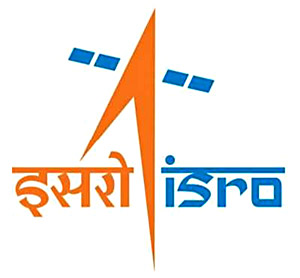 Ground facilities have been one of the most important activities of Indian space Research organisation (ISRO). It was largely developed to equip the nation as well as the world with all the infrastructural amenities that are required to launch a successful rocket as well as satellite in space. Ground facilities of ISRO includes the facilities for development of Satellites and launch vehicles, their testing, launch infrastructure for sounding rockets and Satellite Launch Vehicles, Telemetry, tracking and command network, data reception and processing system for remote sensing. All this make ISRO one of richest Rocket launching centre with latest ground facilities in Asia. The ISRO plants which provide the ground facilities have been developed in a number of places all over India with its headquarters in Bangalore.
Ground facilities have been one of the most important activities of Indian space Research organisation (ISRO). It was largely developed to equip the nation as well as the world with all the infrastructural amenities that are required to launch a successful rocket as well as satellite in space. Ground facilities of ISRO includes the facilities for development of Satellites and launch vehicles, their testing, launch infrastructure for sounding rockets and Satellite Launch Vehicles, Telemetry, tracking and command network, data reception and processing system for remote sensing. All this make ISRO one of richest Rocket launching centre with latest ground facilities in Asia. The ISRO plants which provide the ground facilities have been developed in a number of places all over India with its headquarters in Bangalore.
Ground facilities in ISRO began with a number of academic research works which helped to collect the group of eminent scientists from all over the world. This involves a number of Institutions as well as industries who participate with ISRO to provide the needful to the research centre. As for the research work ISRO provides a number of laboratories for research which has been scattered all over the country. This includes Physical research laboratory located in Ahmedabad, semi conductor laboratory in Chandigarh, National Atmospheric research laboratory in Chittoor, Raman Research Institute in Bangalore, Space application centre in Ahmedabad and North Eastern Space application centre in Shillong. Among this Ahmedabad mainly concentrated on the study of Astro-physics, planetry physics, infrared astronomy, Geo-Cosmo physics and plasma physics along with archaeology and hydrology; it at the same time developed another institution under ISRO to study space application which deals with practical use of space technology. This highlights the research in the field of geodesy, satellite based telecommunication, surveying, remote sensing, meteorology, environment monitoring, etc. Among other centres Chandigarh has been mainly known for conducting research on semiconductor technology, micro- electromechanical system, and process technologies related to semi conductor processing. Bangalore is popularly known for astrophysics and astronomy while Chittor, another centre of ISRO carries out fundamental and applied research on Atmospheric and space science.
Ground facilities further include the launching facilities which are mainly conducted from four centres. This includes ISRO satellite Centre, Bangalore ; Satish Dhawan Space centre, Sriharikota, Andhra Pradesh; Vikram Sarabhai space centre, Thiruvananthapuram and Thumba Equatorial Rocket Launching Station (TERLS), Kerala. Among this Bangalore has been the venue of eight well known spacecraft projects with one satellite launching project. It was the site for constructing Bhaskara, APPLE and IRS 1A and presently provides the site for INSAT as well as IRS. Sriharikota is the second largest rocket launching centre of India which was developed after TERLS; it provides the largest solid Propellant Space Booster Plant as well as Static tests and Evaluation complex. Vikram Sarabhai Space centre at Thiruvananthapuram provides the development of the SLVs, PSLVs, ASLVsas well as GSLVs which are the satellite launching Vehicles of India. Along with this TERLS was the base for launching Rohini and other sounding rockets.
Ground facilities along with this further include the provisions for tracking facilities with Telemeters and Tracking and Command network. Tracking facilities with command network is commonly known as ISTRAC meaning ISRO Telemety,Tracking and Command Network. This largely includes network operation, network augmentation, mission operation and spacecraft with health monitoring, communication which is supported with computers and control centre facilities. The main centre for this is Bangalore, Port Blair, Lucnow, Sriharikota and Thiruvananthapuram.
Ground facilities also includes the remote sensing centre which is responsible for remote sensing satellite data acquisition and processing, data dissemination, aerial remote sensing and decision support for disaster management. National Remote Sensing Centre popularly known as NRSC is located in Hyderabad which provides facilities for aerial facilities that will help in collecting data and processing it. Further Ground facilities include the process of Data Analysis which is being used to map, monitor, survey and manage various natural resources of the country under National Natural Resource Management (NNRMS) system.
Thus Indian Space Research Organisation is not only equipped with new satellites for communication and research, it at the same time works as big organisation with a number of ground facilities.




















